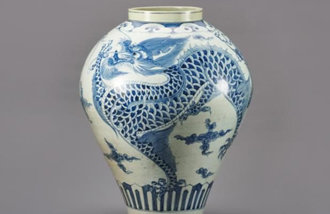[Column] The bilateral agreement on comfort women issue
[Column] The bilateral agreement on comfort women issue
Posted August. 01, 2016 07:08,
Updated August. 01, 2016 07:36
When a foundation that intended to eliminate strategic human rights terrorism against women under the Japanese colonial rule was launched, a 66-year-old female board chairman was attacked by a 21-year-old man with capsaicin. It is a story of July 28 when the “Reconciliation and Cure Foundation” for comfort women or sex slaves under the Japanese colonial rule had a signboard hanging ceremony. That day, I became a member of the board of the foundation.
When I became a preparation committee member for the foundation two months ago, many people told me, “Why do you go to the bumpy road?” and “You took a hard job.” But I did not give much thought about them. However, I came to realize the reality when I saw the bloodshot eyes of Kim Tae-hyun, the chairman of the board of the foundation, with a mixture of embarrassment, frustrations and anger, at an emergency room.
But I have no reason to quit the membership of the board of directors because I recognize that the agreement on comfort women between Korea and Japan on Dec. 28, last year is inevitable. Of course, I am not satisfied with the agreement surely and clearly. While meeting government officials, politicians, political leaders and journalists from both countries, I got to support the "possible alternative" rather than "seeking the impossible best."
There have been only three major decisions over challenging issues between Korea and Japan since Korea’s independence: President Park Chung-hee’s normalization of the diplomatic ties between the two countries in 1965, opening of Japanese culture to Korean in 1998 by President Kim Dae-jung, and President Park Geun-hye’s agreement on comfort women last year. The former two cases caused a lot of criticism and backlash back then, but we now see today’s assessment is quite different. I see the comfort women issue from that perspective.
Admittedly, former "comfort women" and civic groups have made a lot of efforts to attract people’s attention to the comfort women issue. Few can deny this. But it is hard to buy that they cannot accept the agreement unless the agreement includes what they requested 24 years ago because they made 24 years of efforts. I would like to ask you not to argue that most surviving comfort women oppose the agreement and the launch of the foundation. If it is, I will take the signboard of the foundation down and ask it to make a public apology.
If an opposition party seizes power at the next presidential election, will it break the agreement? Then, a more arduous process than the U.K.’s Brexit will ensue. Japan will not respond to our renegotiation proposal, and even if it does, it will only take a stalling tactic. Even if agreed, I think Korea cannot produce any better result than the agreement made on Dec. 28
I do not want to argue that we should implement the agreement because it is made by the government or we need to hurriedly reach an agreement because surviving comfort women have only a few more years to live. It would seem likely that the tail wags the dog.
Maybe now is the time to begin in that the agreement needs to win support through the implementation process. The role of the foundation is very minor in the government’s obligations. Aside from reconciliation and cure, we need “memory,” “honoring,” “research” and “education. Many ask the government to establish a history museum. I seriously propose that the government create a facility where the comfort women can live without any concern with the government budget and then make it into a memorial later. It is encouraging that the government has accepted the requests made by the board directors who claimed that one billion yen must be used only for the comfort women, and the government should pay for office expenses and labor costs.
What if civic groups work on the global stage based on its experience, achievement and passion to help females living in war and violence and the government provides a strong support to them?
Japan should not tie the one billion yen with the relocation of the comfort woman statue and try to interfere with the use of one billion yen. The Japanese prime minister or Japanese ambassador to Korea should work on to find ways that they can express their genuine intention through a summit or a meeting with comfort women.
Over the weekend, I met many Japanese journalists who had served as Seoul correspondents. A Japanese journalist asked, “Do police protect you when you commute?” It is because it was widely known in Japan that an attack was made on the day of the launch of the foundation and college students occupied the press conference venue. But I do not want to take such a question again.
A symposium on the “Comfort Women Issue Since the Korea-Japan Government Agreement” was held in Tokyo University on Sunday. Many renowned Korean and Japanese scholars and journalists attended the event. Some said we should accept the agreement, though not satisfied, while others said we should eliminate it immediately. It was impressive that the attendees were critical of the negotiators and the political and social environment rather than our counterpart. A majority wanted to implement the agreement by supplementing it. I agree with them saying that the agreement is not the end of the game.
Even if I quit a board member of the foundation, no one would stop me. However, while serving for the foundation, I would like to express and live by my belief. Though the agreement has problems, I believe the bilateral agreement over the comfort women issue is the first testbed for the Korea-Japan relationship 3.0.
손진호 전문기자







